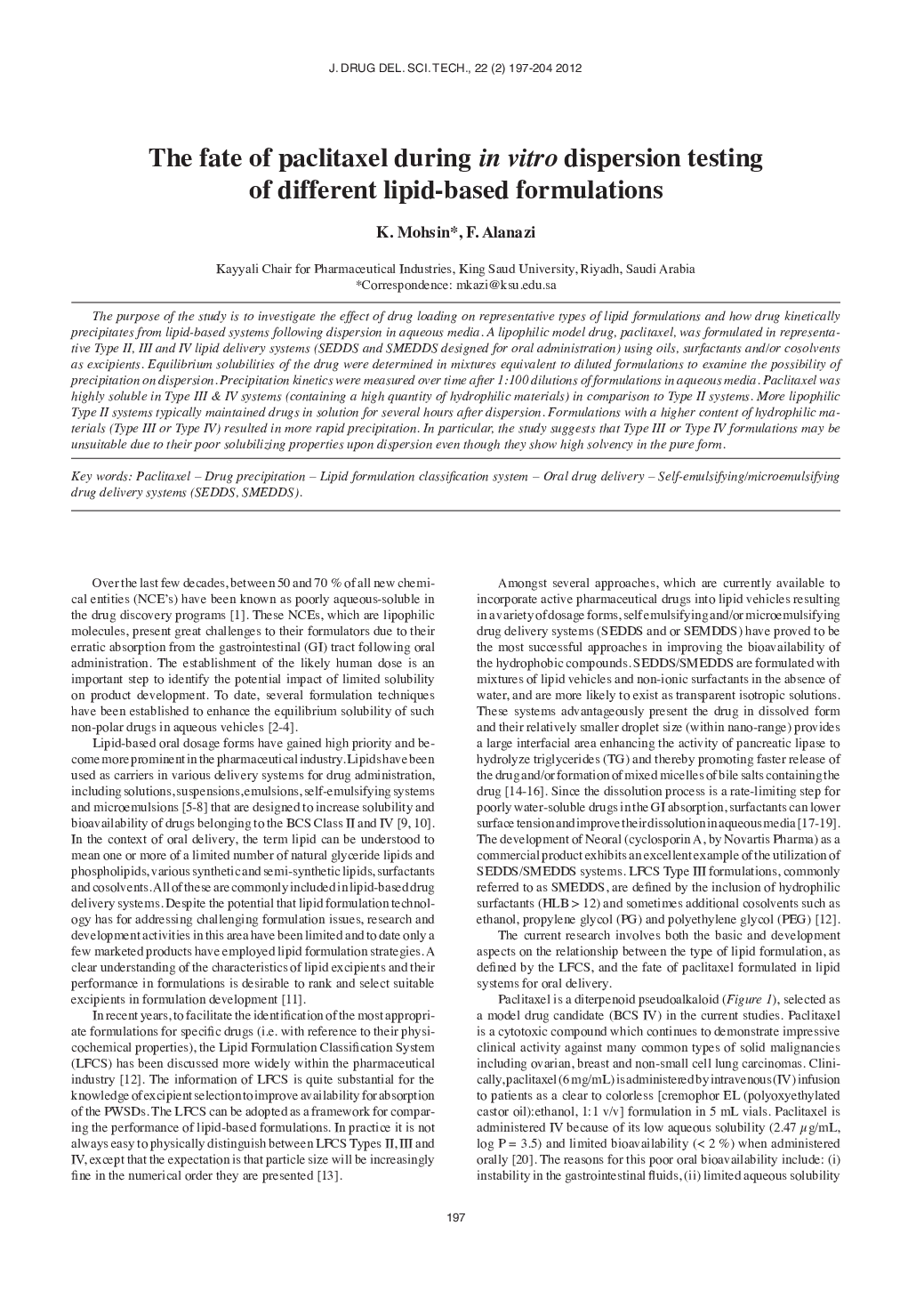| Article ID | Journal | Published Year | Pages | File Type |
|---|---|---|---|---|
| 2483410 | Journal of Drug Delivery Science and Technology | 2012 | 8 Pages |
The purpose of the study is to investigate the effect of drug loading on representative types of lipid formulations and how drug kinetically precipitates from lipid-based systems following dispersion in aqueous media. A lipophilic model drug, paclitaxel, was formulated in representative Type II, III and IV lipid delivery systems (SEDDS and SMEDDS designed for oral administration) using oils, surfactants and/or cosolvents as excipients. Equilibrium solubilities of the drug were determined in mixtures equivalent to diluted formulations to examine the possibility of precipitation on dispersion. Precipitation kinetics were measured over time after 1:100 dilutions of formulations in aqueous media. Paclitaxel was highly soluble in Type III & IV systems (containing a high quantity of hydrophilic materials) in comparison to Type II systems. More lipophilic Type II systems typically maintained drugs in solution for several hours after dispersion. Formulations with a higher content of hydrophilic materials (Type III or Type IV) resulted in more rapid precipitation. In particular, the study suggests that Type III or Type IV formulations may be unsuitable due to their poor solubilizing properties upon dispersion even though they show high solvency in the pure form.
